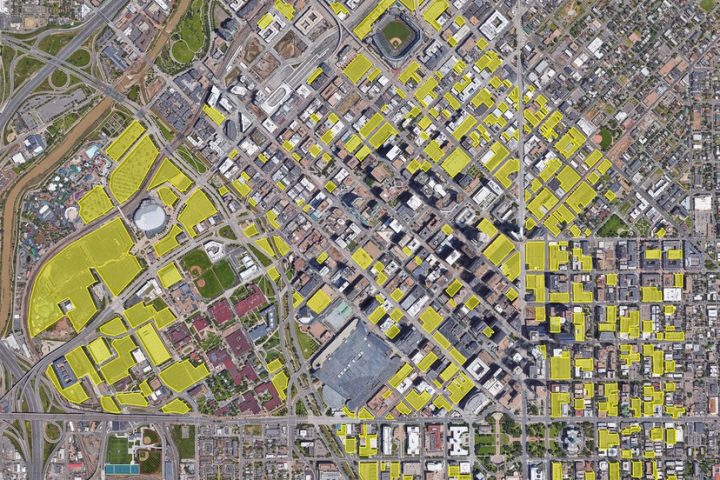Boundaries form between swarming colonies of different [Proteus mirabilis bacteria] strains but not between colonies of a single strain. A fundamental requirement for boundary formation is the ability to discriminate between self and non-self…
— ‘Genetic Determinants of Self Identity and Social Recognition in Bacteria’, by K. Gibbs, M. Urbanowski, P. Greenberg, in the magazine ‘Science’, July 2008.
Apparently, certain types of bacteria, including Proteus mirabilis and Paenibacillus dendritiformis, form ‘swarming colonies’ with their parents and relatives, and establish ‘boundaries’ that tend to keep out identical bacteria that come from a different ancestral lineage. It seems that these bacteria are somehow capable of identifying one another as ‘friends and family’ — and avoiding contact with ‘non-friends and non-family.’

Apparently, examples of what we often consider a very human tendency — to ‘hang’ with certain people and avoid certain other people — can be found even among the tiniest lifeforms on the planet.
But humans are, at their core, gregarious. Social animals. Dare we say, herd animals? Like… like bacteria?
All of which has made the COVID shutdown extremely stressful. We want to be around one another, but we’re fearful of spreading a virus. Some people have reacted to the enforced isolation by becoming depressed… or angry and aggressive. In some cases, unkind, and unfriendly.
This unnatural stress might help explain the actions of four Town Planning Commissioners and Town Planning Director James Dickhoff, when they suddenly and hastily convening a ‘special meeting’ to recommend the dismissal of one of their fellow commissioners, Bill Hudson. (Me.) The timing of the special meeting could not have been more inopportune — or perhaps, more opportune — depending on your feelings about the pending approval of the River Rock Estates subdivision. That 15-acre parcel just south of downtown is owned by local developer Jack Searle and his son, Ryan Searle, who recently approached the Planning Commission for approval of a new subdivision there — without including a single public street. It would be, essentially, a ‘gated community.’
I’ve been making quite a fuss about that proposal, because it appears (to me) to be illegal under the current Land Use and Development Code.
My objections are not personal. They’re political. They’re about the future of our town.
Several months prior, before I was appointed to the Planning Commission by the Town Council, the Searles’ development company — BWD Construction — approached the Council asking for a change in the zoning classification for another development project, located immediately north of the Best Western Pagosa Lodge. BWD was asking for an increase in the allowable building density. A 100% increase, in fact.
One of the primary goals of our current Town Council is to increase the residential density of the town, for several reasons. Generally speaking, increased density within an urban or suburban area tends to reduce housing costs; promote a more walkable, ‘pedestrian-friendly’ community; minimize transportation impacts; and reduce infrastructure maintenance and costs. There are other more philosophical reasons why so many planning experts around the world have been promoting greater urban density — such as the fact that human beings are naturally gregarious, and we tend to enjoy being around one another, in a community.
But maybe… we don’t… really?
Here in America, the trends in residential development have been going in the opposite direction since the 1950s, as residential lots and home sizes have tended to become larger and more separate and — let’s be honest — less ‘friendly’ and less ‘community-oriented’. Those trends have helped to greatly increase the cost of infrastructure construction and maintenance, transportation (public and private), police services, fire services, school bus routes… and just government in general.
These trends have also generated virtual ‘deserts’ of paved parking in large urban centers. Here’s a map of downtown Denver by Frontier Group, showing the areas currently covered with paved parking lots.
From the Frontier Group website:
The primary threat to green space in and around Denver is not skyscrapers going up in downtown or apartments constructed to accommodate new people. It’s the roads, driveways and – perhaps most egregiously – the parking lots we’ve built to accommodate more cars.
When you combine the amount of land covered by pavement in Denver, you find that the development patterns over the past half century have resulted in almost half the city being covered by impervious surfaces — places where nothing green can grow — and almost two-thirds of those surfaces are parking lots, streets and driveways. Surfaces useful only to automobiles.
Our Town Council has consistently expressed a desire to make Pagosa Springs less ‘car-dependent’ and more bicycle- and pedestrian-friendly. But to accomplish that goal, we need to stop designing our residential development projects primarily around automobile traffic — and the things that most promote automobile traffic: residential homes spaced far apart and located far from essential commercial activity. We’ve seen how that pattern is playing out in suburban Archuleta County, where the parking lots have gotten bigger and bigger, and where the roads are nearly impossible to keep well-maintained.
When BWD approached the Planning Commission last fall, asking to have the zoning for “Mountain Lake Villas” changed from ‘R-6’ to ‘R-12’ to allow considerably greater density, some neighbors showed up to complain. The basic complaint, ruthlessly simplified, was “we don’t want more people in our neighborhood.” But it’s the stated intention of the Town Council to increase residential density within the town limits, for the reasons already mentioned. (You can download the Town’s adopted ‘Smart Growth America’ plan here.)
I believe I was the only member of the public to stand up, at that approval meeting, and urge the Commissioners to recommend the zoning change — which the Commission did. After the meeting, Ryan Searle thanked me for speaking up in support of their application.
This took place prior to my appointment to the Planning Commission, which happened a couple of weeks later. Two newcomers to the community, Jeff Posey and Anne-Marie Sukcik, were appointed as ‘regular members’ and two long-time citizen activists, Mark Weiler and myself, were appointed as ‘alternate members’.
I had hoped we would quickly develop into a group of colleagues — agreeing to disagree — and that we’d carefully follow the Town’s Land Use and Development Code while also making well-researched recommendations to update and improve that same LUDC. I imagined that we could become an honest, independent commission, willing and able to ask hard questions.
I hoped we would get away from simply rubber stamping proposals presented by the Town bureaucracy — and become an activist commission, capable of making real contributions to the future of our town.
Apparently, even bacteria can put up boundaries.


